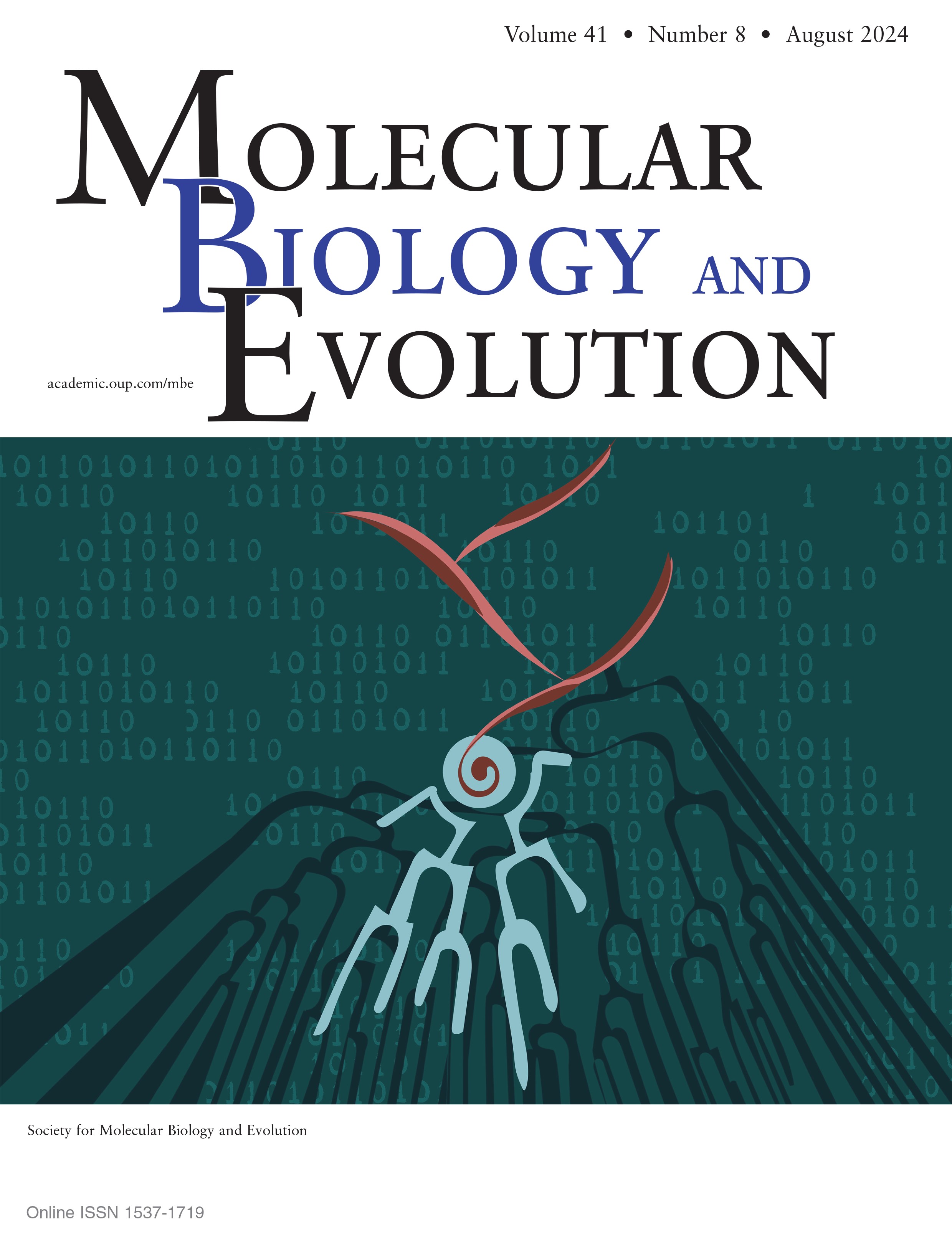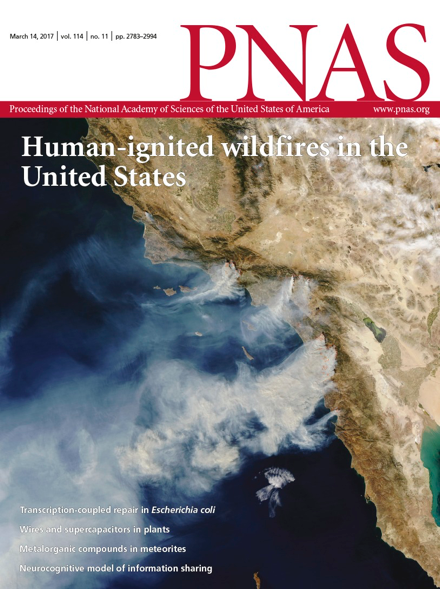Journal Articles
Transcription Factors, Nucleotide Excision Repair, and Cancer: A Review of Molecular Interplay
The International Journal of Biochemistry & Cell Biology.
Evolutionary history of Calcium-sensing receptors sheds light into hyper/hypocalcemia-causing mutations
PLOS Computational Biology.
Dynamics of transcription-coupled repair of cyclobutane pyrimidine dimers and (6-4) photoproducts in Escherichia coli
PNAS, 121(44), e2416877121.
Structural Basis of Frizzled 7 Activation and Allosteric Regulation
Nature Communications, 15, 7422.
Assessing predictions on fitness effects of missense variants in HMBS in CAGI6
Human Genetics.
PHACTboost: A Phylogeny-aware Pathogenicity Predictor for the Missense Mutations via Boosting
Molecular Biology and Evolution.
CAGI, the Critical Assessment of Genome Interpretation, establishes progress and prospects for computational genetic variant interpretation methods
Genome Biology, 25, 53.
Global repair is the primary nucleotide excision repair subpathway for the removal of pyrimidine-pyrimidone (6-4) damage from the Arabidopsis genome
Scientific Reports, 14, 3308.
Downregulated NPAS4 in multiple brain regions is associated with Major Depressive Disorder
Scientific Reports.
Cross-species investigation into the requirement of XPA for nucleotide excision repair
Nucleic Acids Research.
The interplay of 3D genome organization with UV-induced DNA damage and repair
Journal of Biological Chemistry.
Boquila: NGS read simulator to eliminate read nucleotide bias in sequence analysis
Turkish Journal of Biology.
The Mfd protein is the Transcription-Repair Coupling Factor (TRCF) in Mycobacterium smegmatis
Journal of Biological Chemistry, 299(3), 103009.
Discovering Misannotated lncRNAs using Deep Learning Training Dynamics
Bioinformatics, 39(1), btac821.
Effects of replication domains on genome-wide UV-induced DNA damage and repair
PLOS Genetics, 9(18), e1010426.
Sibling rivalry among the ZBTB transcription factor family: homodimers versus heterodimers
Life Science Alliance, 5(11), e202201474.
PHACT: Phylogeny-Aware Computing of Tolerance for Missense Mutations
Molecular Biology and Evolution, 39(6), msac114.
Evolutionary association of receptor-wide amino acids with G protein-coupling selectivity in aminergic GPCRs
Life Science Alliance, 5(10), e202201439.
Genome-wide Excision Repair Map of Cyclobutane Pyrimidine Dimers in Arabidopsis and the Roles of CSA1 and CSA2 Proteins in Transcription-Coupled Repair
Photochemistry and Photobiology, 98(3).
CSB-independent, XPC-dependent transcription-coupled repair in Drosophila.
Proc Natl Acad Sci U S A., 119(9), e2123163119.
Phylostat: a web-based tool to analyze paralogous clade divergence in phylogenetic trees
Turkish Journal of Biology, 45, 667-673.
Comparative analyses of two primate species diverged by more than 60 million years show different rates but similar distribution of genome-wide UV repair events
BMC Genomics, 1(22).
The mutation profile of SARS-CoV-2 is primarily shaped by the host antiviral defense
Viruses, 13(3), 394.
The utility of next-generation sequencing technologies in diagnosis of Mendelian mitochondrial diseases and reflections on clinical spectrum
Journal of Pediatric Endocrinology and Metabolism, 34(4), 417-430.
SURF1-related Leigh Syndrome: Clinical and molecular findings of 16 patients from Turkey
Molecular Genetics and Metabolism Reports, 25, 100657.
Molecular Biology of SARS-CoV-2
Turkish Journal of Immunology, 2(8), 73-88.
Phylogenetic analysis of SARS-CoV-2 genomes in Turkey
Turkish Journal of Biology, 44(3), 146-156.
MiST 3.0: an updated microbial signal transduction database with an emphasis on chemosensory systems
Nucleic Acids Research, 48(D1), D459–D464.
Nucleotide excision repair capacity increases during differentiation of human embryonic carcinoma cells into neurons and muscle cells
Journal of Biological Chemistry, 15(294), 5914–5922.
Differential damage and repair of anti-cancer drug cisplatin induced DNA-adducts across mouse organs
Nature Communications, 10(1), 309.
Genome-wide mapping of nucleotide excision repair with XR-seq.
Nature Protocols (Featured: From the Cover), 14(1), 248-282.
Cisplatin-DNA adduct repair of transcribed genes is controlled by two circadian programs in mouse tissues.
Proceedings of the National Academy of Sciences of the United States Of America, 21(115), E4777-E4785.
Genome-wide Excision Repair in Arabidopsis is coupled to transcription and reflects circadian gene expression patterns.
Nature Communications, 9(1), 1503.
Single-nucleotide resolution dynamic repair maps of UV damage in Saccharomyces cerevisiae genome.
Proceedings of the National Academy of Sciences of the United States Of America, 115(15), E3408-E3415.
Mfd translocase is necessary and sufficient for transcription-coupled repair in Escherichia coli.
The Journal of Biological Chemistry, 292(45), 18386-18391.
Molecular mechanism of DNA excision repair and excision repair maps of the human and E. coli genomes.
The Journal of Biological Chemistry, 292(38), 15588-15597.
Dynamic maps of UV damage formation and repair.
Proceedings of the National Academy of Sciences of the United States Of America, 114(26), 6758-6763.
Human genome-wide repair map of DNA damage caused by the cigarette smoke carcinogen benzo[a]pyrene.
Proceedings of the National Academy of Sciences of the United States Of America, 114(26), 6752-6757.
Class III histidine kinases: a recently accessorized kinase domain in putative modulators of type IV pili based motility.
Journal of Bacteriology, 199(18), e00218-17.
Genome-wide transcription-coupled repair in Escherichia coli is mediated by the Mfd translocase.
PNAS (Featured: From the Cover), 114(11), E2116-E2125.
Aquerium: a web application for comparative exploration of domain-based protein occurrences on the taxonomically clustered genome tree.
Proteins - Structure Function and Bioinformatics, 85(1), 72-77.
Cache domains are dominant extracellular sensors for signal transduction in prokaryotes.
PLOS Computational Biology , 12(4).
Establishing the precise evolutionary history of a gene improves predicting disease-causing missense mutations.
Genetics in Medicine, 18(10), 1029-1036.
CDvist: a webserver for identification and visualization of conserved domains in protein sequences.
Bioinformatics, 31(9), 1475–1477.




